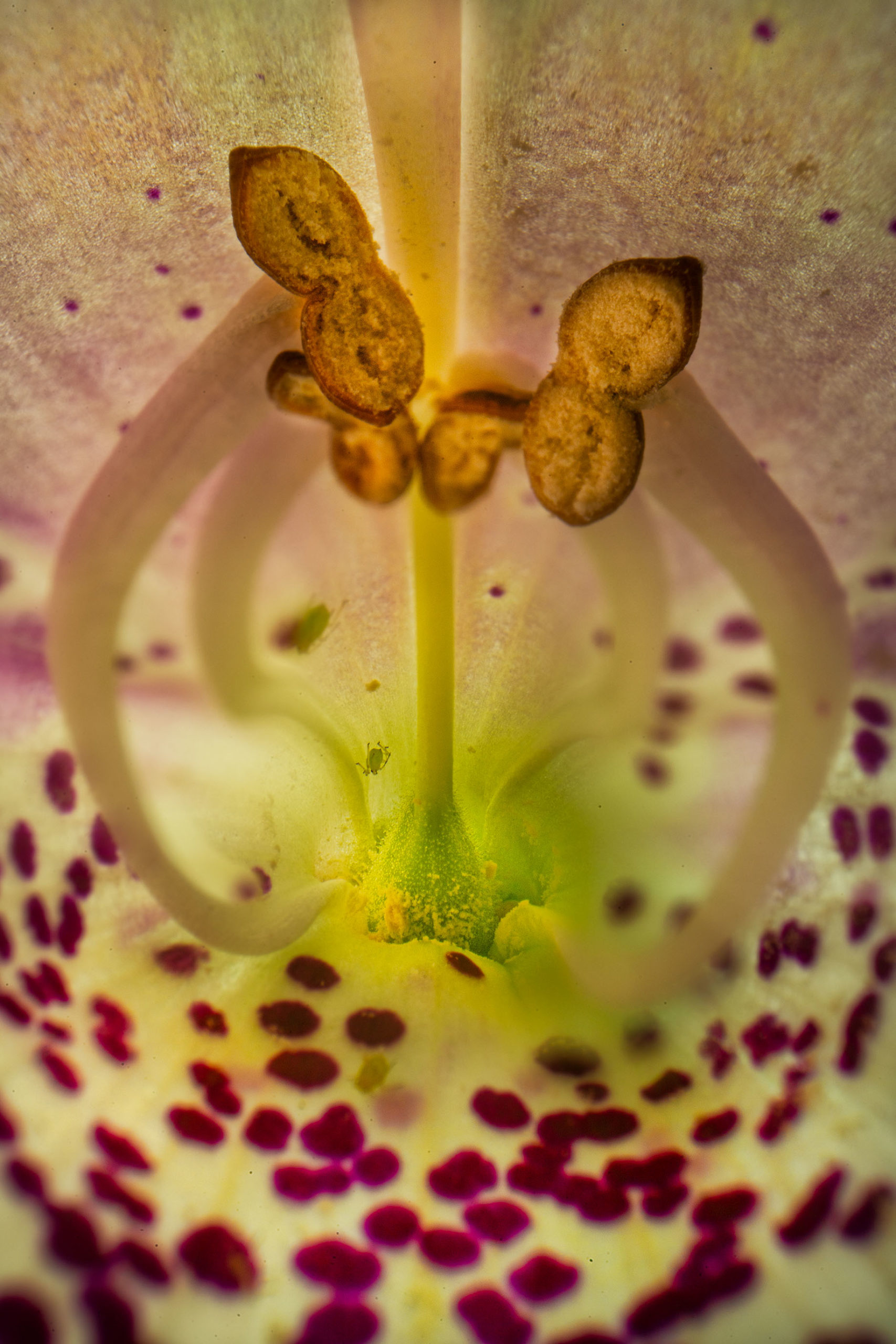Digitalis purpurea is commonly called the Foxglove, I suppose because a fox could slip the flowers on its fingers, at least in fairy land. In fact, the flower is long associated with the beauty and peril of faerie, and sometimes also called the fairy-bell flower.
Digitalis is known for its medicinal properties. Dried seeds and flowers are a powerful heart stimulant, although note that the plant is also toxic—so don’t try ingesting this at home, kiddos. Vincent van Gogh may have: this beautiful flower appears in a number of van Gogh’s paintings, and van Gogh was certainly no stranger to the psycho-pharmacopoeia.

The inflorescence of the plant is covered with the eponymous bell-shaped blossoms. Inside, each blossom is really more cone than bell. My photo shows the inside of one of these blossoms, with backlighting from a light box.
You can clearly see the green flower ovary, rising from the floor of the flower, and the arched gate of stamen leading to the ovary. While the Digitalis spots are wonderfully colorful, we don’t quite get the disco light show that a pollinator would: the round dots are luminescent, emitting colors beyond the human range of perception. It would be a dull pollinator indeed that missed the message of where to go once inside this colorful passage.
Pingback: Inside a Hollyhock
Pingback: Inside Lisianthus